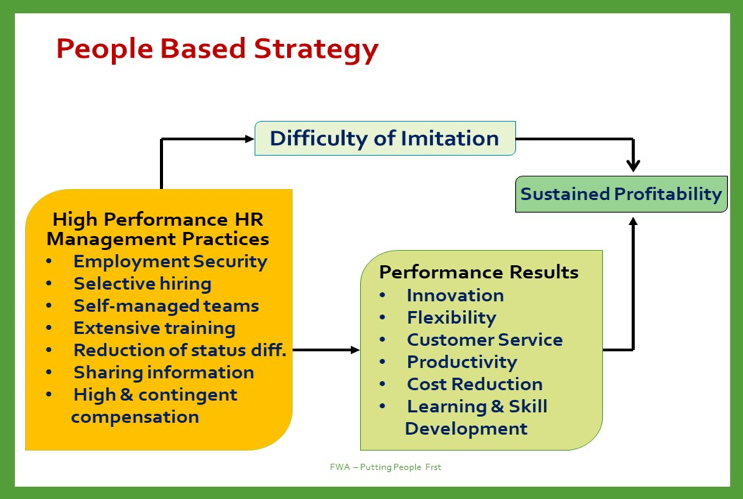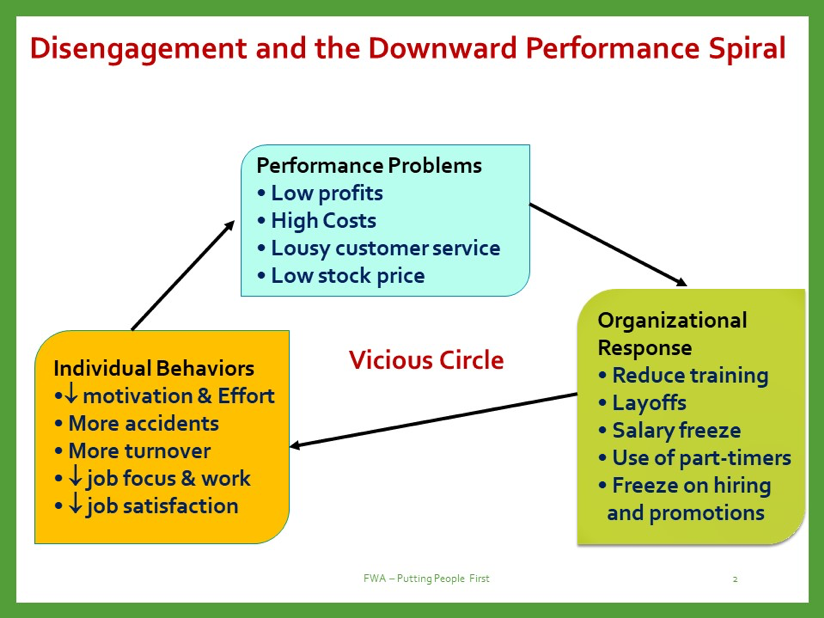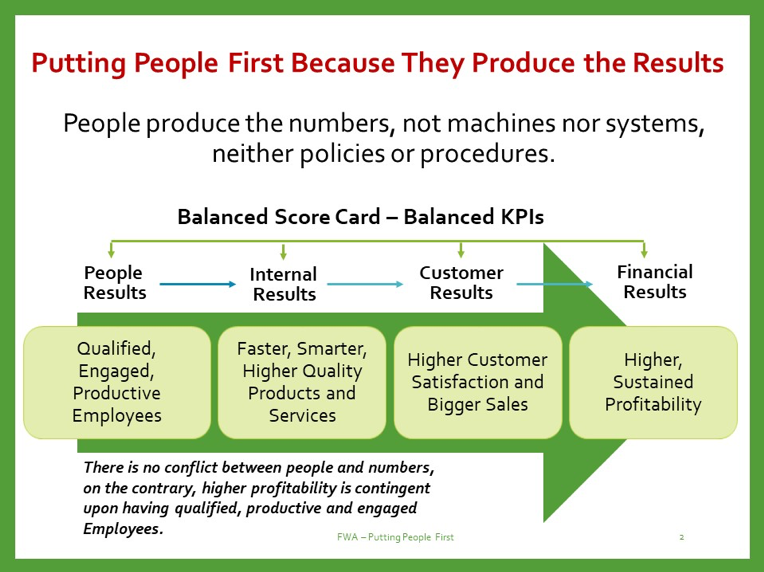
Building a Competitive Advantage in a Post-Corona Age Through HR Best Practices and a People Management Strategy
Introduction
In order to survive and prosper, organizations have to create for themselves a competitive advantage that others who operate in the same market cannot easily imitate. While the post-Corona age has changed many things, this piece of wisdom remains true.
In the short term, most organizations will face three main people challenges:
- Rehiring the talent that was released during the Corona period. This will be a primary reason for higher recruitment costs.
- Maintaining the work from home mode of employment as it has proven to be cost effective for employers and popular with employees.
- Maintaining high employee engagement rates after the large layoffs that were executed during the pandemic. Surprisingly, employee engagement increased by 11% in 2020 compared to 2019 (Josh Bersin, June 2020). Will this increase in employee engagement rates continue in the post Corona period? Research has shown that companies which lean-in to the crisis and invest in their people outperform their peers.
How to create that competitive advantage? Definitely through producing what the customer wants and at the least possible cost through the organization’s resources (tangible and intangible) as well as the formulation and execution of an effective business strategy. Physical, technological, financial, and human resources can be easily acquired on the open market hence, easily imitated. What is difficult to acquire or imitate are the specific management and HR practices that an organization can design, implement and incorporate into its culture. It is these specific management and HR practices that will give an organization its competitive advantage and consequently allow it to sustain its profitability.
The purpose of this article is to highlight the best management and HR practices that allow the organization to build its competitive advantage. Based on Jeffrey Pfeffer’s book ‘The Human Equation’, this article describes these practices and shows how they are expected to work in the post-Corona era. By implementing these best practices, any organization, irrespective of industry or organizational setting, can build and maintain its competitive advantage.
HR Best Practices: Two Schools of Thought
HR management best practices are a set of HR management processes and actions that work universally. These practices are specifically designed by an organization and incorporated into its culture for the specific purposes of attracting, retaining, developing, and engaging human resources in general, and talent in particular. The ultimate purpose of these practices is to create a competitive advantage that is difficult to imitate hence contributing to profit sustainability. There are two schools of thought regarding the management of people in modern organizations:
The strategic HR school also referred to as the best fit school which underlines the modern definition of HR management. The latter being the 'effective utilization of people in order to achieve the organization's strategic objectives and the satisfaction of individual needs'. This school stipulates that for HR to add value, its strategy, policies, and KPIs must be aligned with business strategy.
The best practices school calls for the establishment of a set of universal HR processes and activities that lead to the creation of competitive advantage and consequently to superior business performance. These practices and activities support the organization in reaching and maintaining its market competitive advantage regardless of the type of industry.
Both schools make perfect business sense and do not contradict each other at all. On the contrary, they complement each other. I believe HR management must strive to align its objectives and KPIs with the organization's mission and strategy on one hand, and to implement best HR management practices on the other. In fact, both schools combined make the essence of the modern notion of HR as business partner. Diagram 1 below summarizes the foundations of a people-based strategy which includes the seven HR management practices identified by Pfeffer. Note that the seven practices when bundled together are difficult to imitate on one hand and are capable of generating strategic performance results on the other hand. The seven practices allow the organization to create its market competitive advantage and allows it to sustain its profitability over time.

Diagram 1
The Vicious Circle of Disengagement and Downward Performance Cycle.
A people-based strategy can break the vicious circle that many organizations suffer from. Diagram 2 below gives a clear idea of the nature of that vicious circle.

Diagram 2
Starting with typical negative individual behaviors characterizing an organization at any one time, the resulting performance problems are numerous: low engagement, low productivity, low profitability, bad customer service, and low stock prices. Typically, the organizational response will be as depicted in the third box exacerbating further down individual behaviors.
A people-based strategy that includes the seven HR management practices can break the vicious circle of disengagement and performance.
The Seven Practices in Action
Providing Employment Security and Maintaining Employability
Prior to the Corona pandemic, maintaining job security was difficult due to business uncertainty, fiercer competition, and increasing globalization. In a post-Corona age, providing such security will become even more difficult. Nevertheless, if an employer strives to enable the employees to provide for themselves in a continuous and stable way, then employees will put the effort in return for money and benefits. To compensate for their inability to provide employment security, many organizations resorted to increasing training and development budgets not only to improve employees’ performance, but also to maintain their employability and marketability in case of restructuring and layoffs. Definitely, this first practice has allowed organizations to reduce overall employee turnover rate and retain their best people.
Selective Hiring: The Right People for the Right Jobs
Hiring for attitude rather than just for skill or education is critical for ultimately hiring the right people. Research has shown that the difference in performance between an average performer and a high performer is 400%! That is why organizations wishing to build a competitive advantage and sustain profitability cannot afford but to hire the best. This can be done through pre-employment assessments that can uncover three important employee characteristics:
- Ability: Does the candidate have the right technical and soft skills? Competency based interviewing is crucial in assessing ability.
- Trainability: Does the candidate have the aptitude to learn and keep developing?
- Commitment: To what extent will the organization be able to retain this candidate as he or she becomes highly productive?
In the pre-Corona age, recruiting and hiring talent had become more and more challenging for traditional organizations where employees were expected to show up to a physical location to work. In the post-Corona age, more and more organizations will be going for flexible working hours as a means to recruit talent, increase productivity, and improve work life balance. This is especially true because talent considers flexible hours and working from home as a required benefit.
Self-Managed Teams/Effective and High Performing Teams
Teamwork is a prerequisite for high performance. Team members generate all sorts of different ideas and feel comfortable bringing up these ideas, discussing them, and ultimately taking the collective responsibility to implement them successfully. Through training and other tools, HR management can encourage teamwork and make it part of the organizational culture. Due to Corona, teams have developed the competency to work and collaborate together virtually. This is expected to continue in the post-Corona period.
Extensive Training
One of the reasons why Singapore Airlines is one of the best airline companies in the world resides in the fact that the average number of training days per year per employee is 18 days compared to an average of 5 days for US airlines. Training is not only crucial for increasing productivity but also for keeping employees abreast of rapid technological changes (believe it or not, the average lifespan of a technical skill is now around 18 months).
Soft skills are also very important. These are durable skills like leadership, collaboration, perseverance, embracing change, communication, problem solving, creativity, etc. These skills never get obsolete. One can take them anywhere inside the business and outside it.
Due to the Corona pandemic, learning has become more important than ever and it is now playing a central role as we enter the new world of work. In a recent study conducted by LinkedIn, 66% of L&D professionals agree that their role has become more strategic in the organization.
HR can maximize the impact of training in general if the following four conditions are met:
- Design and develop technical and soft skill training programs that are linked to the company's competency framework and strategic goals.
- Deliver interactive training with the objective of maximizing learning. This can be done through role playing, case studies and real life examples.
- Allow for failures in applying training lessons. Otherwise, people will be worried about applying what they have learned. More specifically, make sure that whatever feedback about employee learning and development efforts is entirely separate from performance appraisals.
- Encourage managers and peers to coach and mentor individual trainees and offer them continuous and constructive feedback. This definitely plays a big role in improving or building soft skills. As a matter of fact, coaching is now considered as the primary tool for developing future leaders.
One has to remember that learning is becoming increasingly important for new Millennials and Generation Z members who rate learning and personal growth as much more important compared to older generations.
Reduction of Status Differences and Information Sharing
Reducing status differences among employees and sharing information (open communication) sends the message that every employee is a valuable member of the organization and will be treated as such. Such a practice reduces hearsay, rumors, and gossip.
This practice aims at involving everybody in the business as a means to increase employee engagement and motivation. During the pandemic, many organizations tried their best not to allow employee engagement rates to dip down. They partially managed to do that through honest and open communication explaining to their employees what is being done and why. It is expected that organizations will continue sharing information after the pandemic as a way of increasing employee engagement.
High and Contingent Compensation
If the organization is hiring the right people, it will have to compensate them at above average rates and link their total pay to their performance. This can be done through various compensation plans such as profit sharing, stock options, shared ownership, etc. A policy of rewards and recognition that is performance based is a strategic HR management practice. This principle will remain valid in the post-Corona age.
What happens when HR management bundles these practices together and in alignment with the organization’s mission, goals, and objectives? Diagram 3 tells it all. Performance results will be outstandingly high bringing financial results and sustaining them over time.

Diagram 3
A strategy of putting people first will ultimately get reflected in the organization’s scorecard. Bundling together the seven HR management practices and linking HR KPIs to the organization’s KPIs will ultimately lead to higher and sustained profitability. As diagram 3 illustrates, there is no conflict whatsoever between people management and the bottom line. On the contrary, achieving a higher financial ROI is contingent upon attracting, developing, and retaining the best human capital.
Related Articles

A Workplace Counseling Tale
In the heart of Dubai, nestled amidst towering skyscrapers and the hum…

Building a Culture of Continuous Learning
During times of turmoil and when it comes to reduced corporate spending,…

People Analytics: Transforming Organizations Through Power of Data
Data is crucial in shaping business strategies and decision-making processes…

The Impact of AI on the Corporate Training Industry
Having been at the forefront of corporate training for two decades, I…
